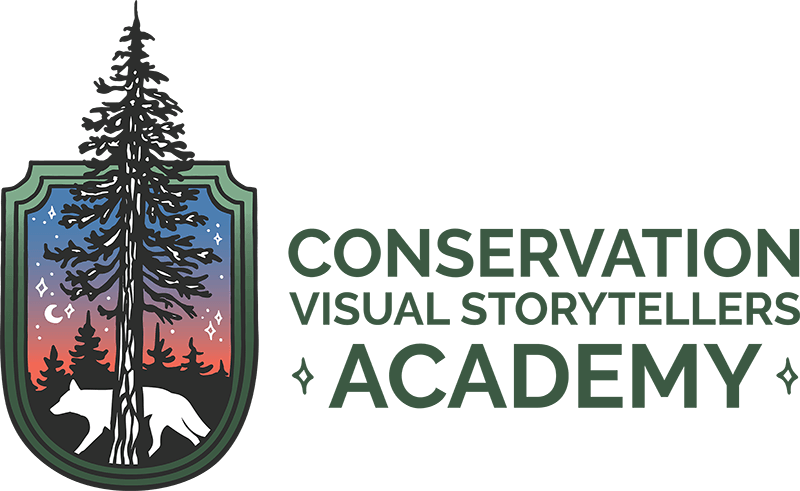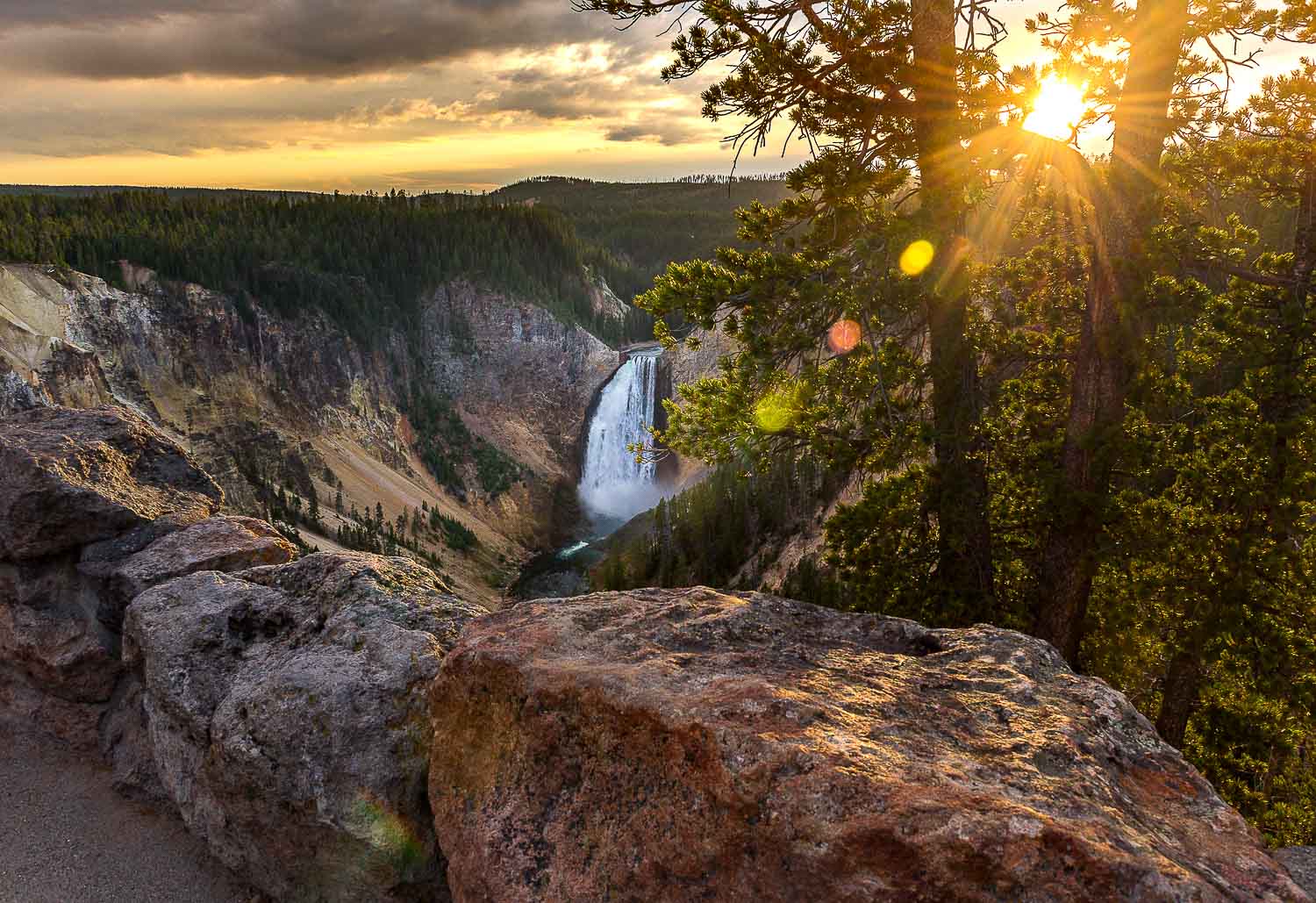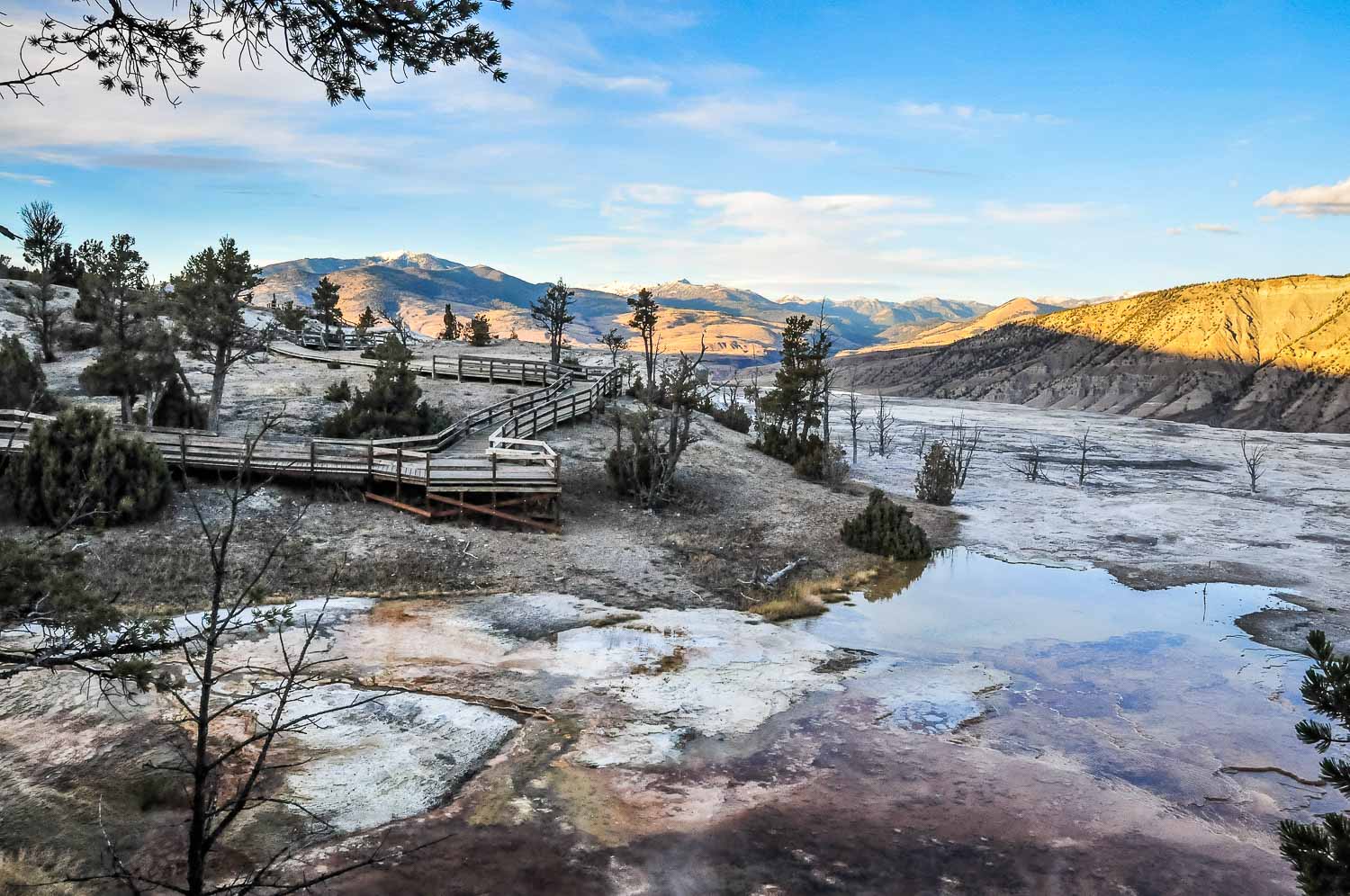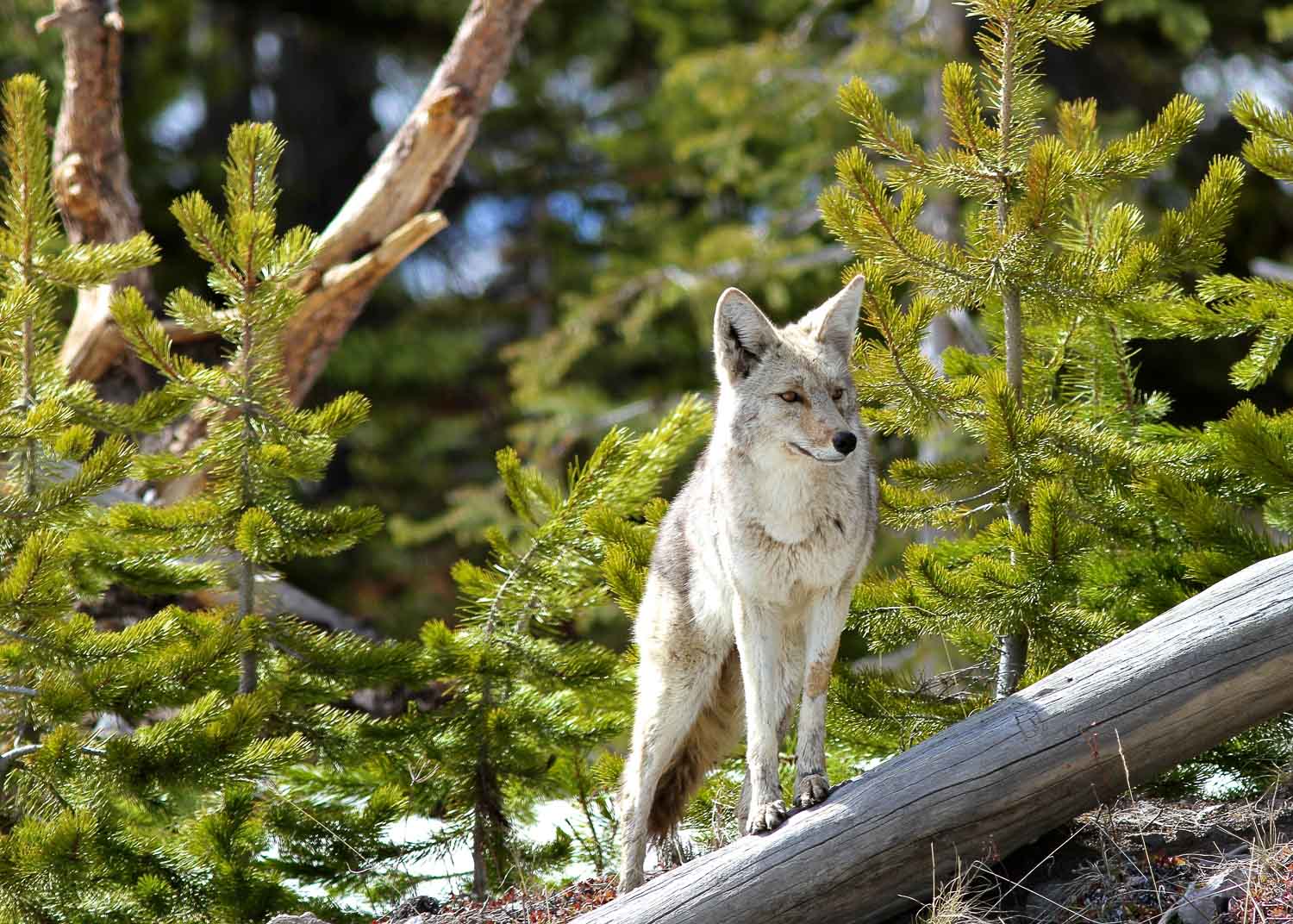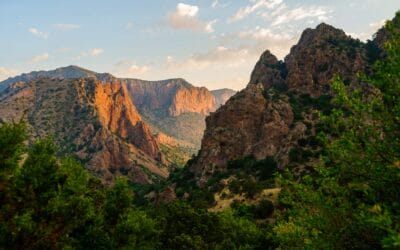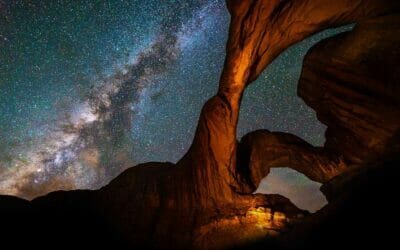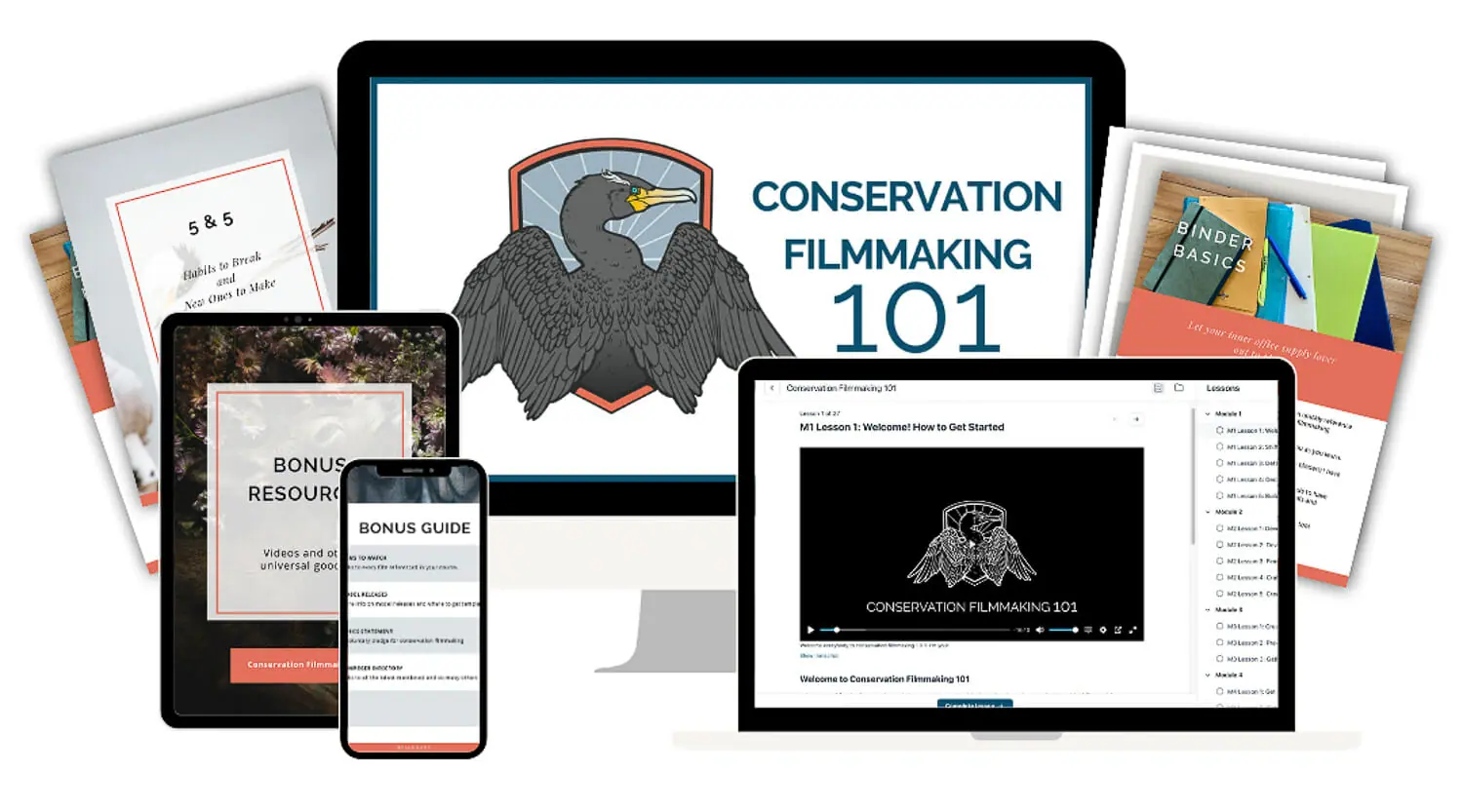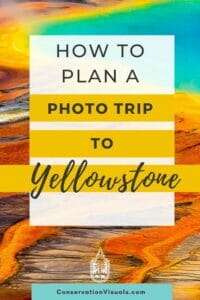Contents
Feature photo by Scott Canning/Shutterstock
Read Time: 15 minutes
Yellowstone National Park is a photographer's paradise, teeming with diverse landscapes and captivating wildlife! As you embark on your photographic journey, you'll be amazed by the mesmerizing geyser basins offering unique opportunities to capture the park's iconic geothermal features.
Along the scenic Grand Loop Road, you'll encounter Obsidian Cliff, made up of dark volcanic rocks contrasting with vibrant hot springs. Meanwhile, the bison rut and bighorn sheep sightings will surely delight wildlife enthusiasts. And if you're lucky, you might even spot black bears during their most active period in late spring.
So grab your camera, and let's explore!
Contents
- Choosing your trip dates
- What to wear
- Photography gear to pack
- Safety considerations
- Self-led tours vs. guided tours
- Old Faithful Geyser
- Grand Prismatic Spring
- Mammoth Hot Springs
- Lamar Valley
- Grand Canyon of the Yellowstone
- Hayden Valley
- Noris Geyser Basin
- Tower Fall
- West Thumb Geyser Basin
- Fountain Paint Pot
- More great resources for planning your trip
Choosing your trip dates
If you've visited Yellowstone National Park, you already know it offers a stunning array of photographic opportunities all year long. But for those planning their first trip, choosing when to visit can be tough.
Do we brave the winter to experience photographing bison trudging through the snow along the icy Yellowstone River? Or visit during the height of summer to capture bighorn sheep on the slopes of Mount Washburn?
Whether you're captivated by the promise of spring, the warmth of summer, the colors of autumn, or the stillness of winter, there's always a perfect time to capture the park's breathtaking beauty. And no matter when you visit, you'll surely be enchanted by the park's ever-changing landscapes and abundant wildlife.
But, because Yellowstone is vast and experiences dramatic changes in weather conditions throughout the year. As a result, certain facilities, roads, and activities are available only during specific seasons.
Here's an overview of what to expect during each season:
Spring (Late April to May)
Spring arrives at Yellowstone in late April as the snow melts and temperatures slowly rise. This is a time of rejuvenation, with plants starting to bloom and wildlife emerging from their winter slumber.
While the North Entrance at Gardiner, MT, to the Northeast Entrance at Cooke City, MT, remains open year-round, the National Park Service usually starts to open other park entrances and roads in mid-to-late April, depending on weather conditions and plowing progress.
Some visitor centers and campgrounds may begin to open during this period, but some services will only be available later in the season.
Pros:
- Witness the park as it comes to life after a long winter slumber, with vibrant wildflowers, lush greenery, and gushing waterfalls.
- Enjoy prime wildlife-watching opportunities as newborn animals like bison calves – adorably called “red dogs” – take their first steps (or wobbles) and migratory birds return to their summer homes.
- Experience fewer crowds and more tranquil moments, perfect for capturing those serene landscape shots.
Cons:
- Unpredictable weather can bring rain, snow, or a mix of both, so be prepared to adapt your photography plans accordingly.
- Some roads and facilities may still be closed due to lingering snow, limiting access to certain areas of the park.
Summer (June to August)
Summer comes to Yellowstone in June, offering long, warm days and cooler nights. This is the peak season for tourists, as the park's roads, trails, and facilities are typically fully accessible.
The summer months are ideal for hiking, wildlife watching, and enjoying the park's stunning waterfalls. However, it's worth noting that this is also when wildfires may occur due to dry conditions.
Keep in mind that summer is the busiest time of the year, so it's essential to plan ahead and make reservations for accommodations and campsites.
Pros:
- Revel in long days and warm temperatures, providing ample time to explore and photograph the park's diverse landscapes.
- Capture the park's iconic geysers, including Old Faithful, in all their glory.
- Take advantage of ranger-led programs and events to deepen your understanding of Yellowstone's natural wonders.
Cons:
- Crowds can be intense during the peak summer months, so finding those quiet, intimate moments with nature is harder.
- Be prepared for potential haze from wildfires, which can impact the clarity and vibrancy of your landscape shots.
Photo: Pung/Shutterstock
The Grand Canyon of the Yellowstone is carved by the mighty Yellowstone River, and is a spectacular sight at any time of the year.
Autumn (September to October)
Autumn in Yellowstone starts around September, bringing cooler temperatures and vibrant fall colors. This season is perfect for those who prefer a quieter experience as the crowds begin to thin out.
The crisp air and changing foliage create a picturesque setting for photography enthusiasts. At the same time, wildlife becomes more active as they prepare for the upcoming winter.
Most facilities, including visitor centers and campgrounds, remain open through September and into October. However, some may begin to close as the season progresses. Road closures can also occur due to early snowfall or other weather-related factors.
Pros:
- Marvel at the park's dazzling display of fall foliage, with quaking aspens and cottonwoods painting the landscape in hues of gold and orange.
- Enjoy cooler temperatures and fewer crowds, allowing for more peaceful photography sessions.
- Capture the park's wildlife preparing for the winter months, with elk bugling, bears foraging, and bison herds on the move.
Cons:
- Weather can be quite variable, with sunny days giving way to sudden snowstorms or chilly rain showers.
- Some facilities may close for the season, so plan your visit accordingly.
Winter (November to March)
Winter descends upon Yellowstone in November, transforming the park into a snowy wonderland. While many facilities close during this season, and some roads become inaccessible, enjoying the park's beauty and serenity is still possible.
Winter activities include snowshoeing, cross-country skiing, and guided snowmobile tours.
Only the North Entrance at Gardiner, Montana, to the Northeast Entrance at Cooke City, Montana, remains open for wheeled vehicle access. Most visitor centers close, but the Albright Visitor Center in Mammoth Hot Springs and the Old Faithful Snow Lodge & Cabins stay open with limited services.
Pros:
- Experience Yellowstone's magical transformation into a winter wonderland, with snow-capped peaks, frozen waterfalls, and steamy geysers framed by icy crystals.
- Practice your skills in photographing wildlife against a snowy backdrop. Winter is the best time to spot wolves as they brave the harsh conditions.
- Savor the solitude and serenity of the park during its quietest season, allowing for more intimate encounters with nature.
Cons:
- Access to the park is limited, with many roads closed for the season and only accessible via snowmobile or snow coach.
- Subzero temperatures and deep snow can make photography more challenging, so bundle up and protect your gear from the elements.
With official openings and closures subject to seasonal variations, it's essential to check the park's official website for the most up-to-date information regarding road conditions, facility availability, and weather updates before planning your visit.
Photo: gubernat/Shutterstock
Your clothes are as important as your photography gear when visiting Yellowstone. Consider the season and weather to stay safe and comfortable.
What to wear
No matter the season or location within Yellowstone, dressing appropriately is crucial for a comfortable, safe, and successful photography adventure. Here are a few things to consider when packing for your trip:
Visiting Yellowstone in the spring
Spring in Yellowstone brings unpredictable weather, with a mix of rain, snow, and sunshine. Dressing in layers is a must to adapt to the ever-changing conditions.
- Moisture-wicking base layer of merino wool or synthetic materials to keep sweat away from your skin
- Mid-layer of a fleece or lightweight down jacket to provide insulation and warmth during cooler moments
- Waterproof and breathable rain jacket as an outer layer to protect you from sudden showers or snowfall
- Waterproof and breathable hiking pants to keep you dry while navigating muddy trails
- Make sure your hiking boots are waterproof to help keep you dry and have good ankle support to keep you safe and moving on those long treks
- Remember gloves, a warm hat, and a neck gaiter or scarf to protect against chilly winds
Visiting Yellowstone in the summer
During the summer months, Yellowstone can experience warm days and cool evenings. Light layers will keep you comfortable throughout the day.
- Lightweight, moisture-wicking base layer to stay cool and dry in higher temperatures
- Breathable long-sleeve shirt or light jacket that can provide extra warmth when needed
- Packable rain jacket for surprise summer storms
- As it gets warmer, bring convertible hiking pants or shorts to allow for flexibility in changing temperatures
- Breathable hiking boots
- A wide-brimmed hat, sunglasses, and sunscreen are crucial for sun protection
- A light scarf or neck gaiter can shield against cooler evening breezes
Visiting Yellowstone in the autumn
Fall in Yellowstone offers stunning foliage, crisp air, and cooler temperatures. As always, dressing in layers is key for staying comfortable during this season.
- As in spring and summer, opt for moisture-wicking base layers to keep sweat at bay
- Fleece or lightweight down jacket provides warmth as temperatures drop
- Waterproof, breathable rain jacket
- A pair of insulated or lined hiking pants will offer extra warmth on chilly days
- Waterproof hiking boots with good ankle support are essential for navigating damp trails
- Warm gloves, a hat, and a neck gaiter or scarf will help protect against the autumn chill
Visiting Yellowstone in the winter
Yellowstone's winter wonderland brings frigid temperatures, snow, and ice. Dressing warmly and in layers is crucial for staying comfortable and safe.
- Moisture-wicking, thermal base layer to keep you dry and warm in extreme cold
- Insulated down or synthetic jacket to provide essential warmth in freezing conditions
- Waterproof and windproof shell jacket to protect you from harsh winter elements
- Insulated and waterproof pants are necessary for staying warm and dry in snowy conditions
- Make sure your hiking boots are insulated and waterproof and have good traction to navigate icy terrain safely
- Heavy-duty gloves, extra thick socks, a warm hat, and a neck gaiter or balaclava are crucial for protecting against frostbite and wind chill.
By dressing appropriately for each season, you'll be ready to tackle Yellowstone's diverse landscapes and focus on capturing the park's awe-inspiring beauty.
Recommended: We list a few of our top recommendations for rain gear, gloves, insulated overalls and other clothes for outdoor photographers in this gift guide (which makes a handy wishlist if anyone asks you what you want for a birthday or holiday!)
Photo: FloridaStock/Shutterstock
Consider both what you want to photograph – whether landscapes or wildlife – and Yellowstone's often-fickle weather when deciding what camera gear you want to pack.
Photography gear to pack
Equipping yourself with the right gear is essential for capturing the breathtaking landscapes, awe-inspiring geothermal areas, and diverse wildlife of Yellowstone NP. Whether you're a seasoned pro or an enthusiastic beginner, the recommendations below will help you create stunning images during your photography expedition.
Camera Body
Your choice of camera body largely depends on your personal preferences and budget. However, consider investing in a durable, weather-sealed camera that can withstand the elements and variable conditions.
Both DSLR and mirrorless cameras are excellent options for wildlife and landscape photography. Here are the cameras we recommend for landscape photography and for wildlife photography.
Lenses
Having a variety of lenses on hand will allow you to capture Yellowstone's diverse landscapes and wildlife up close or from a distance. Bring along the following:
- Wide-angle lens (14-35mm): Ideal for expansive landscapes and capturing the park's vast scenery.
- Standard zoom lens (24-70mm): A versatile option for general photography, including landscapes and some wildlife.
- Telephoto lens (100-400mm or more): Crucial for photographing wildlife from a safe distance while maintaining image quality.
Remember to pack your camera lens hoods, too – they're an underrated and utterly essential tool for high-quality photos.
Check out our guides to the best landscape lenses and the best wildlife lenses to help you make gear decisions.
Tripod
A sturdy, lightweight tripod is essential for long exposures, low-light situations, and telephoto wildlife shots. Look for a tripod with adjustable legs and a ball head for flexibility in various terrains.
Filters
Packing a few key filters can enhance your images and protect your lenses. Test out using the following options:
- Circular polarizing filter: Reduces glare, darkens skies, and enhances colors in landscapes.
- Neutral density filter: Allows for longer exposures in bright conditions, creating smooth water and cloud movement effects.
- UV filter: Protects your lens from scratches and dust while reducing haze in your images.
Camera Accessories
Remember these essential accessories to keep your gear protected and functioning smoothly:
- Extra batteries: Yellowstone's cold temperatures can drain battery life quickly, so pack spares to ensure you don't miss a shot.Memory cards: Bring multiple high-capacity memory cards to store all your images.
- Camera bag: A comfortable, weather-resistant camera bag or backpack will protect your gear and provide easy access while on the go.
- Lens cleaning supplies: A microfiber cloth, lens brush, and air blower will help keep your lenses clean and free of dust or smudges.
Wildlife Photography Extras
To further enhance your wildlife photography experience, consider these additional items:
- Monopod: Provides extra support for telephoto lenses while offering more mobility than a tripod.
- Beanbag: Ideal for stabilizing your camera and lens when shooting from a vehicle or uneven surfaces.
- Camouflage cover: Helps blend your equipment into the environment, minimizing disturbance to wildlife.
With the right gear, you'll be well-equipped to capture the stunning landscapes and charismatic critters that make Yellowstone a photographer's paradise.
Photo: Tom Reichner/Shutterstock
Yellowstone is not Disneyland. Many tourists are injured each year – either by wildlife because they underestimate the wildness of the animals they encounter, or by the elements because they underestimate the weather and terrain. Simply be smart and you'll have a wonderful trip!
Safety considerations
Embarking on a photography adventure in Yellowstone is an exhilarating experience. Still, it's essential to prioritize safety while exploring.
In this section, we'll discuss key safety considerations to keep in mind during your photographic journey, ensuring you enjoy a memorable and incident-free visit to this awe-inspiring destination.
Wildlife Safety
Yellowstone is home to a variety of wild animals, including bears, wolves, bison, and elk. It's crucial to respect their space and follow these guidelines:
- Follow park rules (and logic) by staying at least 100 yards away from bears and wolves, and 25 yards away from other wildlife, such as bison and elk. Use a telephoto lens to capture close-up wildlife images without encroaching on their territory or disturbing their natural behavior.
- Never feed wildlife. It's dangerous for both you and the animal. Plus, it's illegal in the park.
- Be bear aware by carrying bear spray, making noise when hiking, and following proper food storage guidelines to minimize encounters with bears.
- Be familiar with ethical wildlife photography guidelines. Check out our ethics guide for quick reference.
Geothermal Feature Safety
- An erupting geyser is fascinating to photograph, but it's literally a hot spot! Geysers and other geothermal areas can pose serious risks if not approached with caution.
- Stay on designated boardwalks and trails, as the ground in geothermal areas can be fragile and thin, with boiling water just below the surface. Stick to marked paths to avoid accidents.
- Avoid getting too close to geysers or steam vents, as eruptions can be unpredictable and scalding water can cause severe injuries.
Weather and Terrain Safety
Yellowstone's weather can be unpredictable, and its terrain can be challenging. Be prepared by following these tips:
- As discussed earlier, dress in layers and bring suitable clothing for the season and expected weather conditions.
- Carry sufficient water to keep you hydrated and your energy levels up during long hikes or photography sessions.
- Be realistic about your physical abilities. Only attempt hikes or climbs that are manageable and safe for your skill level.
- Check the weather forecast so you're aware of any incoming storms or extreme temperatures. Adjust your plans accordingly.
General Safety Tips
- Lastly, keep these general safety tips in mind while exploring Yellowstone:
- In case of emergencies, let someone know your itinerary, including planned routes and expected return time.
- Cell service is limited in the park, so bringing a map, compass, and/or GPS device will help you navigate and avoid getting lost.
- Follow Leave No Trace principles to preserve the beauty of Yellowstone and respect National Park Service rules and regulations.
By keeping these safety considerations in mind, you can enjoy your Yellowstone photography adventure with confidence and peace of mind.
Photo: Tiffany Noel Videography/Shutterstock
Whether you're guided by a knowledgeable pro, or enjoy your adventure solo, Yellowstone is full of incredible photography opportunities.
Self-led tours vs. guided tours
As a nature photographer, you'll want to make the most effective and efficient use of your time during your visit. One vital decision to make during the planning phase is whether to embark on a self-led tour or join a guided photography tour.
Both options offer unique benefits and drawbacks, and your choice will depend on your personal preferences, experience, and goals.
A self-led tour offers the freedom and flexibility to explore Yellowstone at your own pace and focus on the areas that interest you most.
Going this route allows you to set your own schedule, visit locations at your preferred times, and spend as much time as you'd like at each site, tailoring your itinerary to your specific interests – whether that's photographing certain wildlife, landscapes, or geothermal features.
A self-led tour can be more cost-effective than a guided tour, as you decide on your transportation, accommodations, and meals.
At the same time, planning a self-led tour requires research, route planning, and securing accommodations, which can be time-consuming and challenging.
Without a guide's expertise, you may miss out on lesser-known locations, ideal photography spots, and the best times to capture specific subjects.
From a safety perspective, navigating unfamiliar terrain without a guide presents potential safety risks, especially if you're inexperienced with the park's wildlife, geothermal features, or weather conditions.
Guided photography tours are led by experienced professionals who provide expert knowledge, tips, and insights to enhance your photographic experience in Yellowstone.
During a guided tour, a professional guide will share their extensive knowledge of the park, including the best locations, times, and techniques for capturing stunning images.
Guided tours typically include transportation, accommodations, and meals, allowing you to focus solely on your photography while also giving you a chance to connect with fellow photographers, share experiences, and learn from one another.
Plus, your guide will be well-versed in the park's safety measures, ensuring you stay a safe distance from wildlife and geothermal features while navigating challenging terrain.
Conversely, guided tours follow a predetermined schedule and itinerary, which may limit your ability to explore specific locations or spend more time at certain sites, and can be more expensive than self-led tours due to the inclusion of transportation, accommodations, meals, and guide fees.
Ultimately, the choice between a self-led tour and a guided photography tour will depend on your priorities, budget, and desired level of independence.
Photo:Kris Wiktor/Shutterstock
Brace yourself for beauty at every turn! Be sure to maximize early mornings and late afternoons for the most color and animal activity.
Our 10 favorite locations for photographing Yellowstone NP
Embarking on a photography adventure in Yellowstone is an experience like no other. This vast and diverse park offers endless opportunities for nature photographers to capture breathtaking landscapes, fascinating geothermal features, and iconic wildlife species.
In this section, we'll delve into our top ten favorite locations for photographing the wonders of Yellowstone.
From iconic landmarks like Old Faithful to lesser-known gems like the Fountain Paint Pot area, these destinations will inspire you to explore the park with your camera in hand.
Photo: BlueBarronPhoto/Shutterstock
Old Faithful Geyser is a much-photographed icon. Yet, there's always opportunity for uniquely creative photos if you stretch your imagination.
Old Faithful Geyser
Best for:
Geothermal features, steam, and surrounding landscape
Why we love it:
Old Faithful is the iconic symbol of Yellowstone National Park, known for the awe-inspiring power of its eruptions. This geyser captures the essence of the park's geothermal activity, drawing visitors from around the world.
Its consistent eruptions provide ample opportunities for photographers to plan for and experiment with different techniques and compositions. Additionally, the surrounding landscape of the Upper Geyser Basin, including the nearby Firehole River, makes for a stunning backdrop.
Photo tips & ideas:
- Use a fast shutter speed and a wide-angle lens to capture the eruption.
- Experiment with long exposures to emphasize the steam movement, possibly of the geyser erupting at night, with the stars in the background.
- Capture a panoramic shot of Old Faithful and the surrounding landscape, taking the shot from the boardwalk or the Old Faithful Inn's balcony for a unique perspective.
Photo: Berzina/Shutterstock
Spectacular colors and impressive patterns await your creative photographer's eye at Grand Prismatic Spring.
Grand Prismatic Spring
Best for:
Colorful hot springs, microbial mats, steam, reflections, and aerial views
Why we love it:
Located with the Midway Geyser Basin is the Grand Prismatic Spring is the largest hot spring in the United States, boasting vibrant colors created by thermophilic bacteria. This natural wonder is a must-see for any photographer visiting Yellowstone.
Its striking colors, steam, and reflective waters offer endless possibilities for creative compositions. The nearby boardwalks allow you to get up close to the spring, while hiking to the Fairy Falls Trail overlook provides a stunning aerial view.
Photo tips & ideas:
- Use a polarizing filter to enhance the colors and reduce glare while taking a reflection shot of the Grand Prismatic Spring.
- Visit during the early morning light or evening golden hour to capture the warm glow of the sun on the steam.
- Capture close-up, abstract images of the vibrant colors and patterns formed by the microbial mats.
Photo: Matthew Thomas Allen/Shutterstock
Mammoth Hot Springs provides ample opportunity to discover strange, other-worldly landscapes to photograph in detail. It's also a hot-spot for elk!
Mammoth Hot Springs
Best for:
Terraced travertine formations, elk, and historic buildings
Why we love it:
Mammoth Hot Springs showcases a unique landscape of terraced travertine formations that are constantly changing due to the flow of mineral-rich water. This location provides endless opportunities for creative compositions, from capturing the intricate patterns and textures of the travertine to photographing elk roaming nearby.
The historic Fort Yellowstone buildings add another layer of interest to this fascinating area. Visiting during sunrise or sunset can create a magical atmosphere as the warm light enhances the colors of the terraces.
Photo tips & ideas:
- Capture the intricate patterns and textures using a macro lens or telephoto lens.
- Use a wide-angle lens to include both the terraces and the historic buildings in your frame.
- Experiment with black and white photography to emphasize the contrast and textures of the travertine terraces.
Photo: Jaymi Heimbuch
Lamar Valley is an ideal place for wildlife sightings, including bison, pronghorn, and if you're very lucky, the wolves that play a keystone role in this ecosystem.
Lamar Valley
Best for:
Wildlife (wolves, bison, elk, deer, pronghorn, and more), expansive landscapes, rivers, and sunrises/sunsets
Why we love it:
Lamar Valley is a wildlife photographer's paradise, offering incredible opportunities to spot and photograph wolves, bison, and other animals in their natural habitat. Patience is key when photographing wildlife, so be prepared to spend hours waiting for the perfect moment.
The sweeping landscapes provide a dramatic backdrop for your images as the valley stretches before you, adorned with rolling hills and the Lamar River. Visiting during sunrise or sunset can create breathtaking scenes as the warm light bathes the valley in a golden glow.
Photo tips & ideas:
- Use a telephoto lens to capture close-up shots of wildlife.
- Experiment with silhouettes during sunrise or sunset to create dramatic images of a wolf pack or bison herd against the vast landscape.
- Capture the reflections of the landscape in the calm waters of the river during the late afternoon.
Photo: Alberto Loyo/Shutterstock
Grand Canyon of the Yellowstone is a can't-miss spot is a dream for capturing epic vistas, and an important part of the geological history of Yellowstone NP.
Grand Canyon of the Yellowstone
Best for:
Waterfalls, colorful canyon walls, scenic vistas, wildlife, and long exposures
Why we love it:
The Grand Canyon of the Yellowstone showcases the park's geological history with its colorful canyon walls and powerful waterfalls.
This location, formed by the Yellowstone River, offers an array of breathtaking views and photographic opportunities, whether you're capturing the thundering falls or the canyon's rugged beauty.
Wildlife sightings are also possible in this area, adding another layer of excitement for photographers. Visiting different viewpoints, such as Artist Point or Lookout Point, allows you to capture the canyon's majesty from various perspectives.
Photo tips & ideas:
- Experiment with different shutter speeds to capture the motion of the waterfalls. Try a long exposure shot of the Lower Falls, capturing the movement of the water against the colorful canyon walls.
- Visit Artist Point or Lookout Point for dramatic panoramic shots of the canyon that emphasize the scale and depth of the canyon.
- Include foreground elements, such as trees or rocks, to add depth and interest to your compositions.
Photo: NaturesMomentsuk/Shutterstock
Pronghorn are the fastest hoofed animal in North America. These speedsters can hit up to 60 miles per hour! They likely evolved such speed to outrun the now-extinct American cheetah. Be sure to bring a telephoto lens to capture portraits of this exceptional species!
Hayden Valley
Best for:
Wildlife, especially grizzly bears and bison, meandering rivers, reflections, and sunrises & sunsets
Why we love it:
Hayden Valley is another prime location for wildlife photography, with frequent sightings of grizzly bears, bison, and other species. Visiting during early morning or late afternoon offers opportunities to photograph wildlife in action, as well as beautiful lighting conditions that can transform the valley into a breathtaking scene.
The lush valley and meandering rivers also make for stunning landscape photos. The expansive grasslands and wetlands provide a serene setting for capturing the park's beauty.
Photo tips & ideas:
- Using a telephoto lens, safely snag a close-up portrait of a grizzly bear or bison from a distance with the lush valley as a backdrop.
- Capture the reflections of the landscape in the calm waters of the river during early morning or late afternoon, with the golden light reflected on the river.
- Experiment with backlighting when photographing wildlife against the serene landscape of the valley during sunrise or sunset.
Photo: Felix Lipov/Shutterstock
Many of our top locations offer opportunities to photograph the unique mineral springs, geysers, and other geothermal spots that Yellowstone is famous for.
Norris Geyser Basin
Best for:
Geothermal features, steaming vents, colorful pools, boardwalks, and contrast
Why we love it:
Norris Geyser Basin is home to some of the park's most unique and fascinating geothermal features. From steaming vents to colorful pools, this location offers endless inspiration for photographers. The stark contrast between the vibrant colors of the pools and the calming tones of the surrounding landscape creates dramatic compositions.
Use the boardwalks throughout the basin to explore and photograph these otherworldly features up close while ensuring your safety and the preservation of the delicate ecosystem.
Photo tips & ideas:
- Utilize a tripod for long exposures to emphasize steam movement.
- Experiment with high-contrast black-and-white photography to highlight the basin's textures and patterns or the steam rising from the geysers and vents.
- Include boardwalks in your compositions to create leading lines and convey a sense of exploration.
Photo: GizmoPhoto/Shutterstock
If you're a waterfall fan, Tower Fall will be top of your itinerary list. If you can't visit at sunrise or sunset, then bring a neutral density filter so you can capture long exposures of the tumbling falls.
Tower Fall
Best for:
Waterfalls, lush forests, basalt columns, long exposures, and varying perspectives
Why we love it:
Tower Fall is an enchanting waterfall surrounded by lush forests and striking basalt columns. This picturesque location is perfect for capturing the beauty of Yellowstone's natural features. The 132-foot waterfall plunges dramatically into a deep canyon, creating a captivating scene for photographers.
Exploring the area around Tower Fall provides opportunities to discover unique angles and perspectives, showcasing the waterfall and its surroundings in all their glory.
Photo tips & ideas:
- Use a slow shutter speed to photograph Tower Fall, highlighting the silky water cascading over the basalt columns.
- Capture a landscape image of the lush forest surrounding the waterfall, with the basalt columns as a background or leading lines in your compositions, experimenting with different angles and viewpoints to showcase the surrounding landscape.
- Utilize a polarizing filter to reduce glare on the water and enhance the colors of the forest.
Photo: Alfie Photography/Shutterstock
As you travel between locations, keep a sharp eye out for wildlife. You'll often get surprise opportunities to photograph coyotes, foxes, black bears and other animals as they go about their business in the park.
West Thumb Geyser Basin
Best for:
Geothermal features, Yellowstone Lake, mountain views, reflections, and steam
Why we love it:
West Thumb Geyser Basin offers a unique combination of geothermal features set against the backdrop of Yellowstone Lake and the distant mountains.
This location provides diverse photographic opportunities in one spot, from capturing the vibrant colors of hot springs to framing dramatic mountain vistas beyond the lake. The interplay of steam, water, and light creates an ethereal atmosphere that can result in truly mesmerizing images.
Photo tips & ideas:
- Use a wide-angle lens to capture the vibrant colors of a hot spring and Yellowstone Lake with the distant mountains in the background, all in a single frame.
- Visit during sunrise or sunset for dramatic lighting and reflections on the water. Include interesting foreground elements, such as rocks or driftwood, to add depth to your compositions.
- Experiment with long exposures to capture the movement of steam rising from a geyser, with the calm waters of Yellowstone Lake reflecting the scene.
Photo: Anders Riishede/Shutterstock
Whether it's the artful edges of Grand Prismatic, the spectacular spouting of Old Faithful, or the bubbling of a fumarole at Fountain Paint Pot, Yellowstone is a joy for finding patterns, textures, and colors to highlight in photographs.
Fountain Paint Pot
Best for:
Mud pots, geysers, fumaroles, textures, and action
Why we love it:
The Fountain Paint Pot area within the Lower Geyser Basin showcases a variety of geothermal features, including bubbling mud pots, erupting geysers, and hissing fumaroles. This location allows photographers to capture the dynamic nature of Yellowstone's geothermal activity.
The mud pots, in particular, provide opportunities for unique, abstract images that highlight the park's diverse and ever-changing landscape. Visiting the area during different times of day can reveal varying lighting conditions that enhance the drama and beauty of these natural wonders.
Photo tips & ideas:
- Use a fast shutter speed to snag a dynamic action shot of erupting geysers or bubbling mud pots.
- Consider using a macro lens to focus on the details and patterns, shooting a close-up, abstract image of a bubbling mud pot.
- Experiment with framing your shots to include multiple geothermal features in a single composition while capturing the contrast between the bright colors of the geothermal features and the surrounding landscape.
These ten locations offer a glimpse into the incredible diversity and beauty of Yellowstone National Park. With patience, creativity, and the right equipment, you can capture stunning images showcasing the park's unique features and wildlife.
Photo: Michelle Holihan/Shutterstock
Wildlife photographers, landscape photographers, even macro photographers can delight in all Yellowstone has to offer.
More great resources for researching your trip
- Travel Wyoming
- National Park Service: Yellowstone National Park
- Conde Nast:A Guide to Outsmarting the Crowds at Yellowstone National Park
One last note: Obviously, Yellowstone is the star of this show, but while you're in the area, why not make plans to take a jaunt next door to Grand Teton National Park! Here are a few resources to plan a two-fer national park visit:
Recommended: Curious about tidepools and coastlines? Check out “Photographing the Oregon Coast: Your Ultimate Guide”
